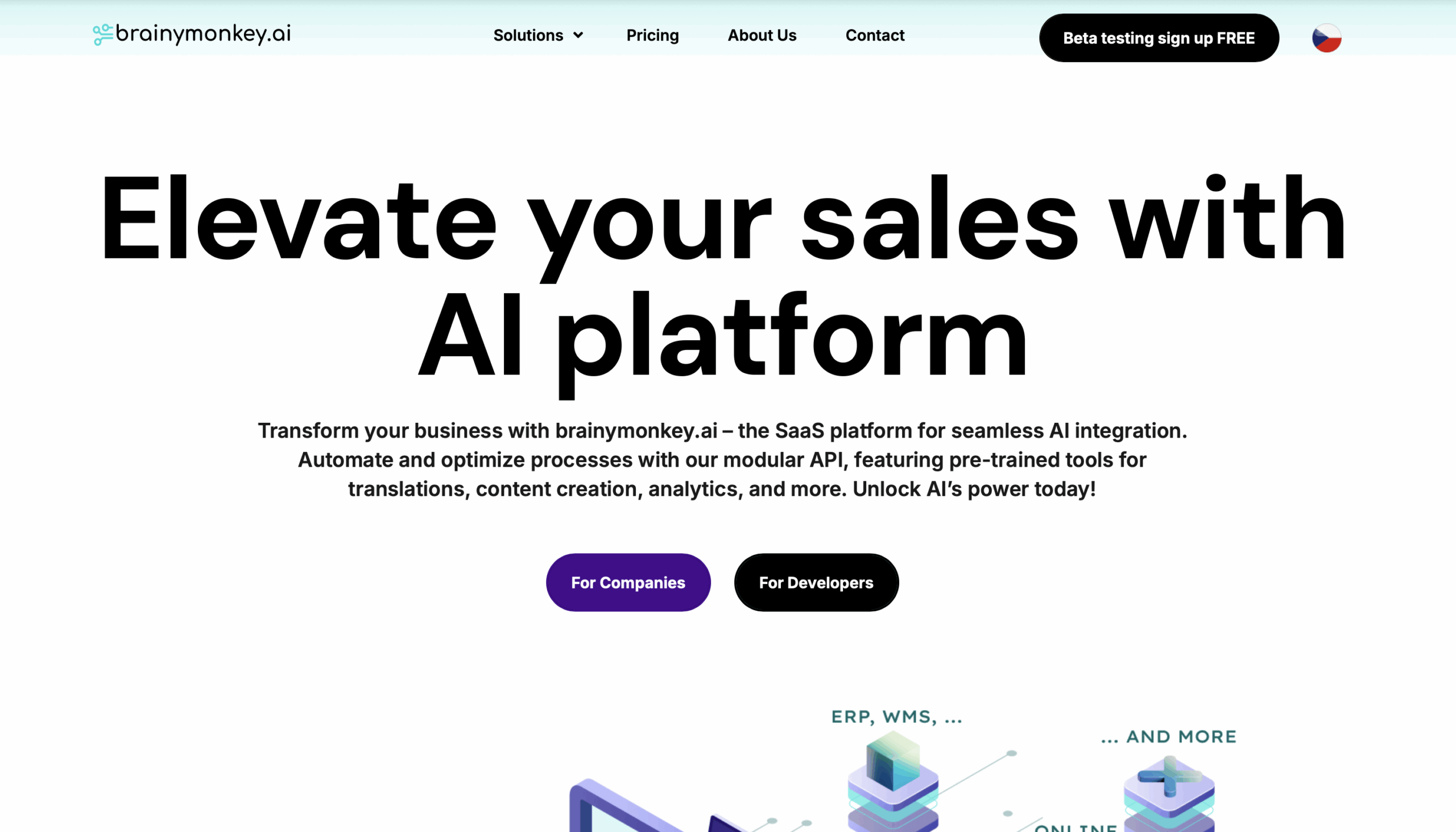BrainyMonkey AI is a SaaS platform designed to make advanced AI solutions accessible for businesses and developers. With over 100 pre-trained models, BrainyMonkey AI helps automate customer support, content creation, multilingual communications, forecasting, and more.
Built with a modular API and flexible architecture, it allows users to easily integrate AI tools into their systems, helping businesses boost productivity, improve decision-making, and accelerate digital transformation without complex setups.
Key Features
- Smarter Customer Support Chatbots: AI-driven conversational agents deliver real-time, human-like support.
- Automatic Multilingual Translations: Translate product descriptions, marketing content, and customer communications effortlessly.
- Forecasting On Demand: Accurate sales and demand predictions powered by ARIMA, XGBoost, LSTM, and LLM technologies.
- AI Content Generation: Quickly create high-quality text, including marketing copy, articles, and social media content.
- Modular API Integration: Connect multiple AI models easily to your existing platforms through a unified REST API.
- Developer Tools: Build, customize, and deploy new AI models through a flexible and collaborative environment.
- Scalable and Secure: Designed for businesses of all sizes with encrypted data protection and easy scaling options.
Pros
- All-in-One Platform: Covers multiple business needs from content to forecasting with one centralized system.
- Flexible and Scalable: Grows with your business, allowing easy upgrades and integration of new AI modules.
- Fast Deployment: Simple API setup minimizes integration time.
- Customization Capabilities: Adjust pre-trained models to fit unique business requirements.
- Cost-Efficient: Reduces operational costs by automating key business processes.
Cons
- API-Dependent: Requires some technical knowledge for integration and customization.
- Generalized Outputs: Some very niche industries may require further fine-tuning beyond pre-trained models.
- Learning Curve for Developers: New users might initially need to familiarize themselves with modular deployment practices.

